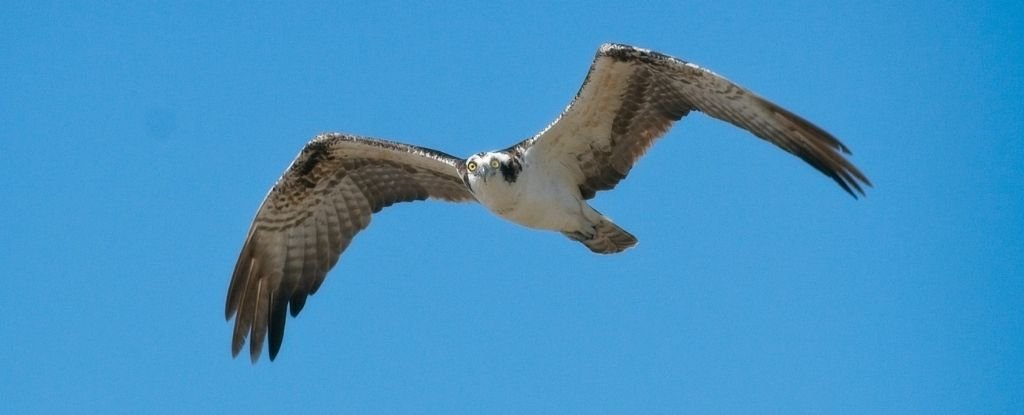
A new study has found migrating birds can read and ride patterns in the wind to breeze across the sea.
When researchers attached GPS trackers to five different species of globe-trotting bird, they found that the wind was the greatest force supporting the animals on their non-stop overseas flights.
"Our findings suggest that the energetic costs of sea-crossing for soaring birds could be at least partially alleviated by overseas uplift," the authors write.
"This may have important consequences for shaping routes, timing, and strategies of birds crossing ecological barriers."
It's only recently that we've truly begun to understand just how vast bird migration can truly be.
The use of biotracking has allowed us to discover that tiny birds, like the common swift, can fly 10 months straight without even once touching the ground.
Some, like the willow warbler, weigh no more than 10 grams (0.35 ounces), but each year, these unassuming birds fly from northern Siberia to eastern Africa and back with very few breaks in between, an annual distance of more than 26,000 kilometers (16,000 miles).
Flapping the whole way there and back would simply be impossible, even for a small bird, and especially for a large one.
So how do ospreys and falcons do it? We're still trying to figure that out.
Some researchers have found large land birds may use horizontal tailwinds to blow them along their route and save energy. But very few studies have found the same for vertical winds, which might also keep migrating birds afloat.
In fact, until now, only the osprey had been found to rely on rising columns of warm air when flying over the Mediterranean sea.
To figure out whether other birds do this as well, researchers tracked five different species of migrating bird for nine years, including the Oriental honey buzzard (Pernis ptilorhynchus), the gray-faced buzzard (Butastur indicus), the osprey (Pandion haliaetus), the Eleonora's falcon (Falco eleonorae), and the peregrine falcon (Falco peregrinus).
The team used the temperature difference between the sea's surface and the air above to indicate if there was a warm updraft of air that the bird was riding.
Altogether, researchers outfitted 65 birds with GPS trackers and recorded 112 sea-crossing pathways. In the end, the authors found all the species maximized their use of wind while migrating.
Tailwinds were the most common way to save energy and time, but uplifts also played a role, albeit to slightly different degrees depending on the size and nature of the bird. Falcons and ospreys, for instance, seem to be less dependent on updrafts than, say, buzzards.
"Until recently, uplift was assumed to be weak or absent over the sea surface. We show that is not the case," says behavioral ecologist Elham Nourani, who conducted the research while at the Max Planck Institute.
"Instead, we find that migratory birds adjust their flight routes to benefit from the best wind and uplift conditions when they fly over the sea. This helps them sustain flight for hundreds of kilometers."
For example: The Oriental honey buzzard, which flies 18 hours non-stop over the East China Sea, appears to pick its timing wisely. In autumn, the air movement conditions across this sea are perfect wind-wise, creating stepping stones of warm air to buoy the bird all the way from Japan to Southeast Asia.
"By making use of uplift, these birds can soar up to one kilometer above the sea surface," says Nourani.
The fact that such a wide variety of land birds all seem to rely on wind and other atmospheric conditions is worrisome. Climate change, after all, could change not only the surface temperature of our seas but also the circulation of our atmosphere, possibly altering where and when these updrafts occur.
If some birds really do rely on seasonal bouts of warm, rising wind to migrate to annual feeding or mating sites, then they may not be able to survive if those seasons and their resulting winds begin to change course.
The winds of change may very well spell their doom. More research is needed to determine how wind updrafts and tailwinds over the ocean might shift in the future.
"Collaborative studies like this are important to unravel general patterns about how migratory birds depend on the weather patterns," says Nourani.
"This enables future studies to make robust predictions about how these birds will be impacted by climate change."
The study was published in the Proceedings of the Royal Society B: Biological Sciences.
"bird" - Google News
September 11, 2021 at 11:07PM
https://ift.tt/38XbHS7
Migrating Birds Follow The Whims of The Wind When Flying Non-Stop Across The Sea - ScienceAlert
"bird" - Google News
https://ift.tt/2s1zYEq
https://ift.tt/3dbExxU
Bagikan Berita Ini















0 Response to "Migrating Birds Follow The Whims of The Wind When Flying Non-Stop Across The Sea - ScienceAlert"
Post a Comment